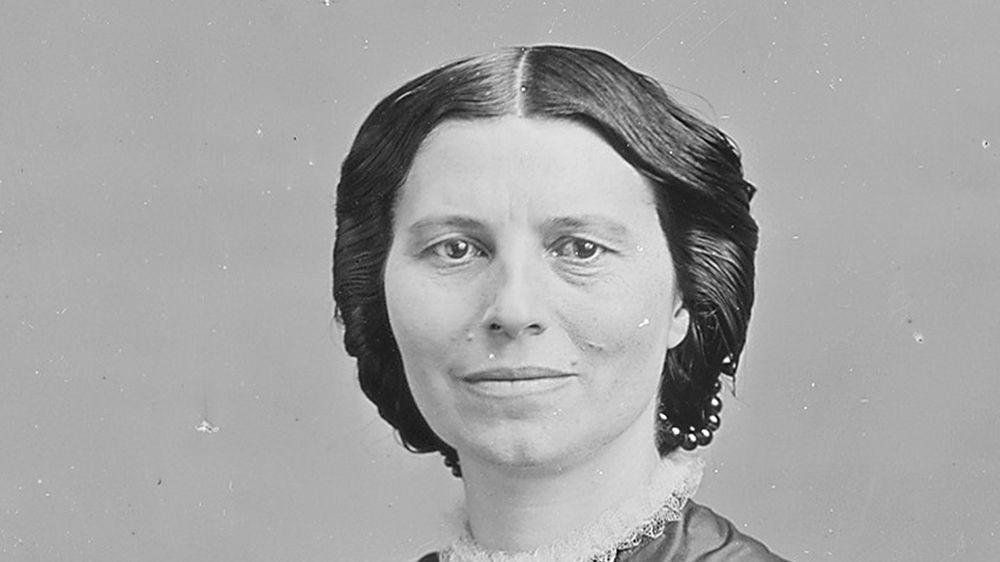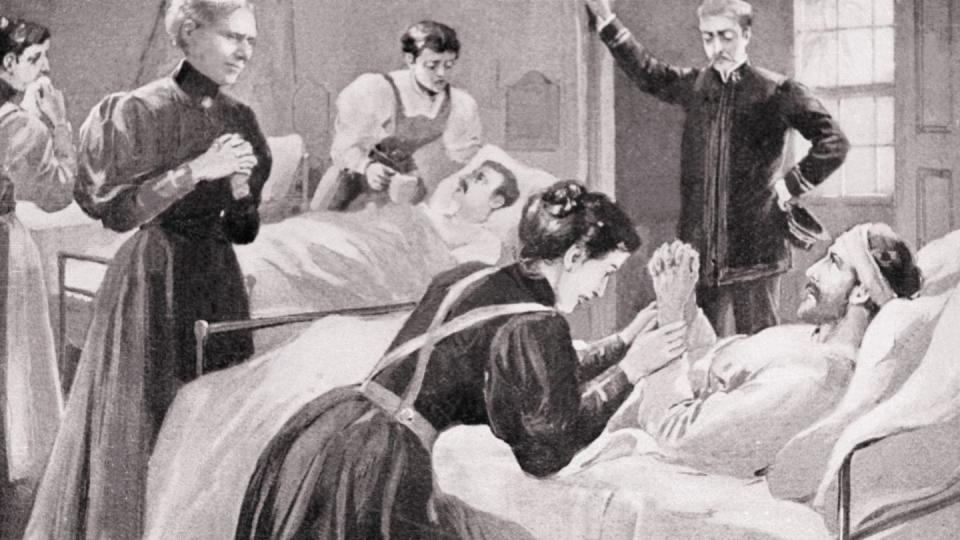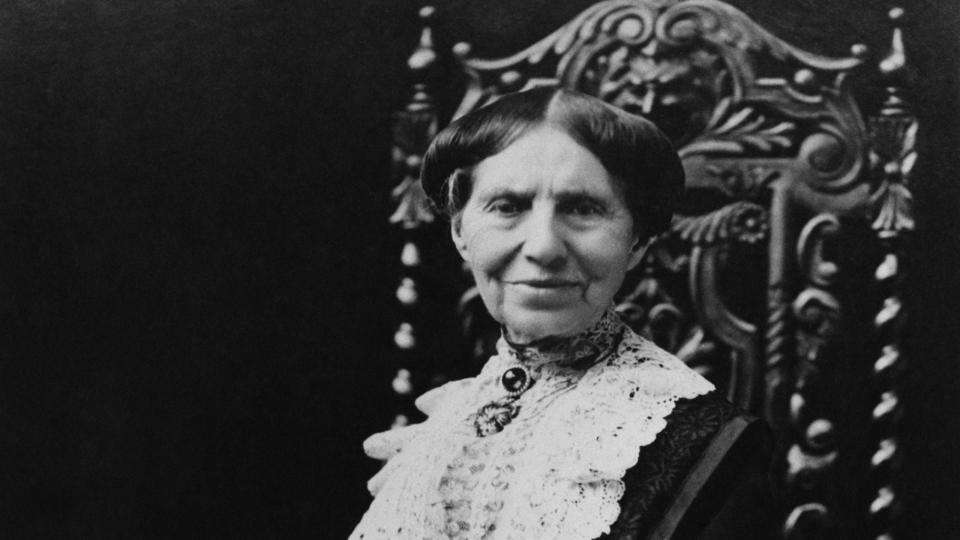Meet Clara Barton, the Founder of the American Red Cross

- Oops!Something went wrong.Please try again later.
"Hearst Magazines and Yahoo may earn commission or revenue on some items through these links."
1821-1912
Who Was Clara Barton?
Clara Barton was an independent nurse during the Civil War. While visiting Europe after the war’s conclusion, she worked with a relief organization known as the International Red Cross and lobbied for an American branch when she returned home. The American Red Cross was founded in 1881, and Barton served as its first president. The Red Cross continues to provide emergency assistance and disaster relief to this day, and Barton’s efforts helped pave the way for women in positions of leadership.
Quick Facts
FULL NAME: Clarissa Harlowe Barton
BORN: December 25, 1821
DIED: April 12, 1912
BIRTHPLACE: North Oxford, Massachusetts
ASTROLOGICAL SIGN: Capricorn
Early Life and Education
Clara Barton was born Clarissa Harlowe Barton on December 25, 1821, in North Oxford, Massachusetts. Barton’s parents were Stephen Barton and Sarah Stone Barton. Stephen was a politician, horse breeder, and farmer who told his daughter stories of the American Indian Wars—helping Clara learn the importance of keeping an army equipped with food, clothing, and medical supplies. This would prove crucial later in her life.
Barton already had a talent with words by age 4, when she started school and was able to spell three-syllable words. In addition to attending school, she received home tutoring from her brothers and sisters. Barton was the youngest of five siblings, including sisters Dorothea, or “Dolly,” and Sarah, who went by “Sally.” Her two brothers were Stephen, a math teacher and businessman, and David, who taught Clara how to ride horses.
A shy child, she first found her calling at age 11 when she tended to her brother David after he fell from the rafters of a barn. Clara stayed home from school to tend to her brother for two years, administering his medicine and even applying and removing leeches to treat him.
Barton later found another outlet for her desire to be helpful as a teenager. On the advice of phrenologist Lorenzo Niles Fowler, Barton began preparing to become a school teacher. She passed her examinations and began teaching near her home in Oxford in 1839. Barton later studied for a year at the Clinton Liberal Institute in New York, beginning in 1850.
Teaching Career
After moving to New Jersey in 1851, she opened the state’s first free public school in Bordentown. Enrollment eventually grew from only six students at the start to more than 200. However, when Bordentown residents built a new schoolhouse in 1853, they decided to make a man the principal—at twice the salary of Barton. An irate Barton quit the school and teaching altogether.
Instead, Barton moved to Washington, D.C., to work in the U.S. Patent Office as a clerk in the mid-1850s. Her $1,400 salary was equal to those of the men she worked with.
Role in the Civil War
Barton returned home to Massachusetts after her copyist role at the Patent Office was eliminated in 1857. Thee years later, she returned to her position to serve under new President Abraham Lincoln. The Civil War began less than a year later.
During the Civil War, Barton sought to help the soldiers in any way she could. At the beginning, she collected and distributed supplies for the Union Army. Not content sitting on the sidelines, Barton served as an independent nurse and first saw combat in Fredericksburg, Virginia, in 1862. She also cared for soldiers wounded at Antietam in Maryland. Barton was nicknamed “the angel of the battlefield” for her work.
Initially, Barton’s help was often declined, as no woman had ever appeared directly on the battlefield, in camps, or in field hospitals. However, she gained the trust of military officials and Lincoln over time.
After the war ended in 1865, Barton worked for the War Department, helping to either reunite missing soldiers and their families or find out more about those who were missing. She also became a lecturer, and crowds of people came to hear her talk about her war experiences.
Founding the American Red Cross


A Story of the Red Cross by Clara Barton
amazon.com
$6.99
While visiting Europe, Barton worked with a relief organization known as the International Red Cross during the Franco-Prussian War of 1870 to 1871. Some time after returning home to the United States, she began to lobby for an American branch of the international organization.
The American Red Cross Society was founded in 1881, and Barton served as its first president. As its leader, Barton primarily oversaw assistance and relief work for the victims of such disasters as the 1889 Johnstown Flood, when a dam break in Pennsylvania led to more than 2,000 deaths, and the 1900 Galveston Storm in Texas. After a hurricane destroyed the Texas island community, more than 8,000 people lost their lives in what remains the deadliest natural disaster in U.S. history.
In 1904, Barton published the book A Story of the Red Cross about her life and efforts with the organization.
Friendship with Susan B. Anthony
Barton was a close friend of suffragist, writer, and lecturer Susan B. Anthony. The two met following the Civil War and often spoke on behalf of each other’s causes. Anthony was a proponent of nursing reform and, in 1902, delivered the keynote address at the New York State Nurses Convention.
Later Years

Barton resigned from the American Red Cross in 1904 amid an internal power struggle and claims of financial mismanagement. While she was known to be an autocratic leader, she never took a salary for her work within the organization and sometimes used her funds to support relief efforts.
In 1905, Barton established the National First Aid Association of America, which developed first aid kits and taught basic first aid instruction and emergency preparedness.
After leaving the Red Cross, Clara Barton remained active, giving speeches and lectures. She wrote another book entitled The Story of My Childhood, which was published in 1907.
Clara never married and had no children. However, she did have several nieces and nephews and a couple furry companions. She first had a dog named Button but grew to adore cats. A painting of her black and white cat named Tommy, her friend of 17 years, still hangs in the dining room at the Clara Barton National Historic Site in Glen Echo, Maryland.
Death
Barton lived to age 90. According to the Telegram & Gazette, she died from double pneumonia at her home in Glen Echo, Maryland, on April 12, 1912. She was buried at her family’s cemetery plot in Oxford, Massachusetts.
Quotes
I may sometimes be willing to teach for nothing, but if paid at all, I shall never do a man’s work for less than a man’s pay.
I may be compelled to face danger, but never fear it, and while our soldiers can stand and fight, I can stand and feed and nurse them.
Soldiers, for every woman’s hand that ever cooled your fevered brow, stanched your bleeding wounds, gave food to your famishing bodies, or water to your parching lips, you should bless God for Susan B. Anthony, Elizabeth Cady Stanton, Frances D. Gage, and their followers.
It has long been said that women don’t know anything about war. I wish men didn’t either. They have always known a great deal too much about it for the good of their kind.
Fact Check: We strive for accuracy and fairness. If you see something that doesn’t look right, contact us!
You Might Also Like

